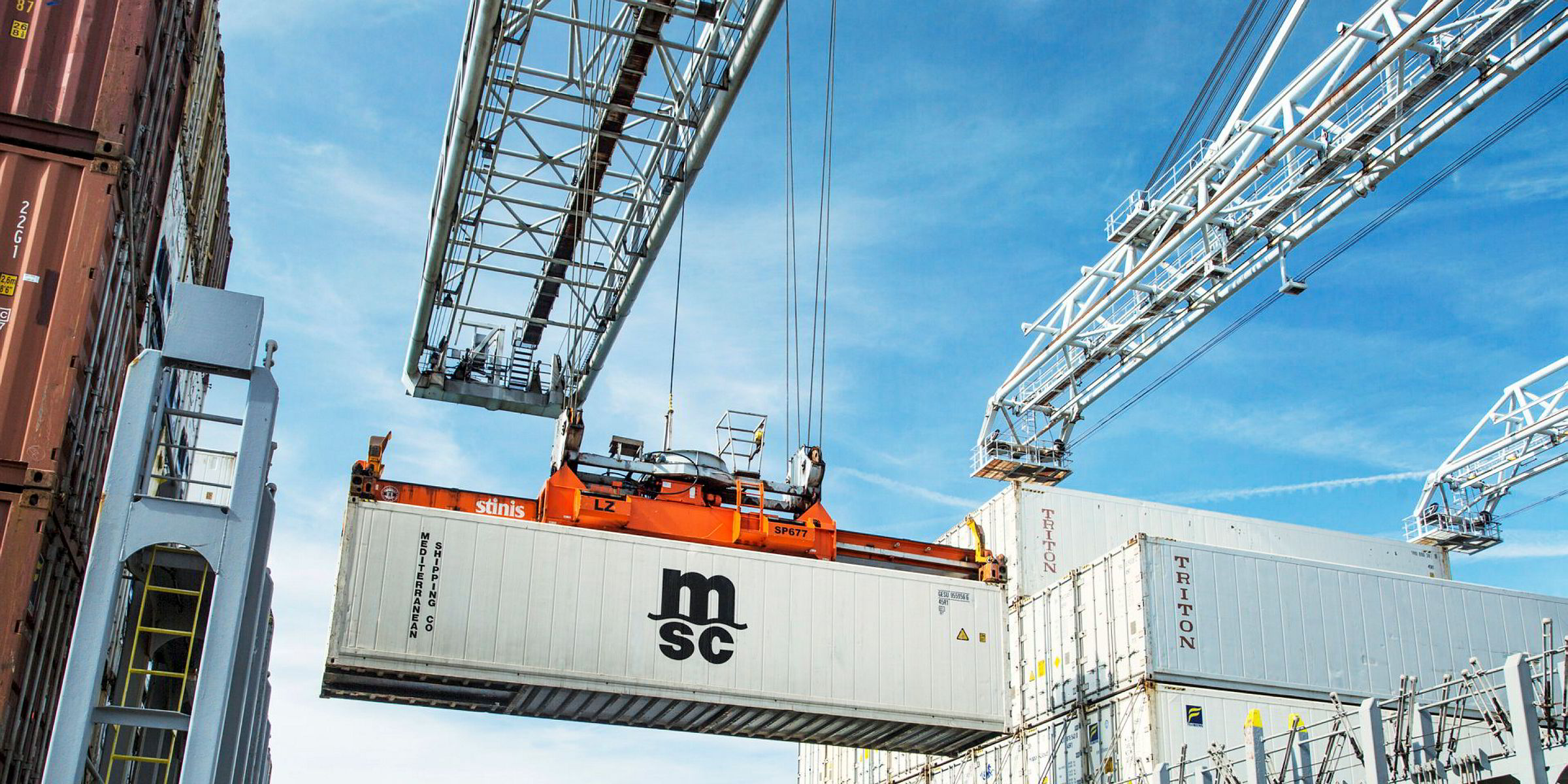The self-ignition of charcoal cargoes that had been certified as safe was responsible for fires on two separate boxships, an accident probe has found.
German investigators are now calling existing testing procedures for charcoal to be revised.
Fires were discovered on both Mediterranean Shipping Co’s 13,000-teu MSC Katrina (built 2012) in the Elbe estuary in November 2015; and the Hapag-Lloyd-operated 13,169-teu Ludwigshafen Express (built 2014) in the Red Sea in February 2016.
Both German-flag vessels had loaded a cargo of charcoal originating from Borneo, Indonesia, which was destined for the same receiver in France. In both incidents, the fires were discovered early and extinguished, causing limited damage.
Although the damage was limited, the just published findings of the probe by Germany’s Federal Bureau of Maritime Casualty Investigation (BSU) may make a significant contribution to industry-wide efforts to reduce the number of boxship fires.
In the case of the MSC Katrina, BSU found that there were seven containers of bulk charcoal loaded from the same shipper.
The cargoes were correctly declared as charcoal, and an analysis report from the shipper declared the cargo as safe.
As such, the cargo did not constitute dangerous goods under the International Maritime Dangerous Goods (IMDG) code.
However, BSU's analysis of the cargo through heat storage tests determined the cause of the fire to be self heating.
The circumstances were similar in the case of the Ludwigshafen Express, where a submission from the shipper declared that 12 containers of charcoal cargo “did not exhibit any hazardous material properties”.
BSU concluded that current testing procedures for charcoal, UN No. 4, may not be sufficient to determine whether charcoal cargoes are likely to self-ignite.
Five cases
The investigators quote five other separate cases where charcoal cargoes have self-ignited, despite passing initial safety tests.
Particle size and moisture content can play a part in self ignition when a cargo is carried in larger volumes, BSU suggested.
Most importantly, the current test does not seem to be able to determine how goods will react when carried in larger quantities in varying conditions.
“It is not possible to fully determine the hazardous material properties of charcoal based on the UN No. 4 test alone.
“This is at least true of charcoal that passes the preliminary test and is then transported in large packages or in bulk in large sea containers.
“The UN No. 4 test does not sufficiently address the dependency on the volume of the goods transported,” BSU said.
BSU also said the two fires raised concerns over the accuracy of shipper’s cargo declarations.
It found “multiple instances” where it could not be determined whether the information provided on a declaration was based on the cargo that was actually carried.
“This is especially true of the certificate for passing the test on self-heating substances required under the IMDG code.
“Documents were accepted even though they did not contain the required information,” BSU said.
In both cases, BSU found no indication as to whether the laboratory conducting the testing was accredited.
‘Special cargo’
Given the doubts over charcoal cargoes, BSU is recommending that — as under International Group guidelines — charcoal is always declared as a “special cargo” and be accompanied by a self-heating certificate, even in circumstances where it has been declared safe.
Given the inadequacy of the current testing, BSU is also advising that charcoal cargoes should always be carried on the deck and no higher than the second tier, to assist in fire fighting.
“This is the only way to facilitate good identification of a container affected by fire and sufficient accessibility in the event of a fire,” it concluded.



